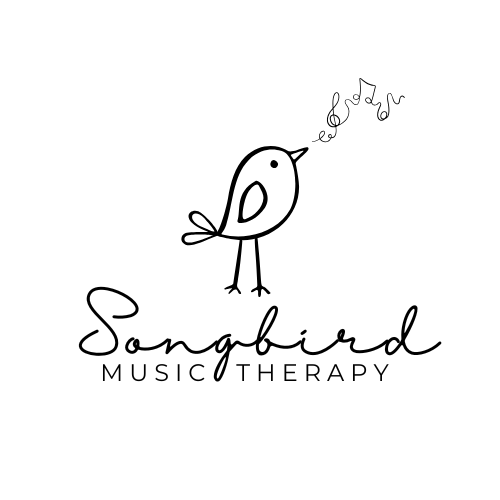Inside a Music Therapy Session: What Actually Happens and Why It Works
Walking into your first music therapy session can be exciting and maybe a little uncertain. Will we be singing? Playing drums? Just listening to music? At Songbird Music Therapy, we often hear questions like:
"What actually happens in a session?"
"Do I have to perform?"
"Is this like a music lesson?"
Spoiler alert: It’s not a performance. It’s not a lesson. It’s something much more personalized, flexible, and supportive.
Here’s a behind-the-scenes look at what really happens in a music therapy session and why it works.
Step 1: Check-In and Connection
We begin every session by grounding in the moment. This could be:
A verbal check-in like "How are you feeling today?"
A musical check-in using instruments or sound choices
A familiar song that helps with transitioning into the session
This gives the therapist insight into how the client is arriving emotionally, physically, and cognitively, and it sets the tone for the rest of the session.
Why it works: Clients feel seen, heard, and safe. This builds trust and allows for more meaningful engagement.
Step 2: Active Music Engagement
This is the heart of the session and it varies based on the client’s goals. Common activities include:
Instrument play such as drums, shakers, piano, and more to support motor skills, attention, and expression
Singing or vocalizing to support speech, breathing, or mood regulation
Call-and-response songs to build turn-taking, listening, and social interaction
Musical games for cognitive flexibility and fun
Improvisation where the client and therapist create music in the moment, often reflecting emotions or shared themes
Why it works: Music stimulates multiple areas of the brain at the same time. Clients often express themselves musically in ways they might not be able to with words.
Step 3: Creative Expression
For some clients, songwriting or themed playlists are part of the process. This could look like:
Writing simple lyrics to a familiar melody
Creating a playlist for a specific mood or life experience
Using songwriting to explore identity or tell a personal story
Why it works: Creating something meaningful helps clients explore emotions, build self-esteem, and reflect in a tangible way.
Step 4: Reflection and Cool Down
We close sessions with intentional transitions. This might involve:
A slower, calming song
Gentle instrumental play
A conversation about how the session felt
Repeating a musical cue that signals the end of the session
Why it works: Structure supports emotional regulation and helps the client return to their day with a sense of closure and clarity.
Every Session Is Unique
At Songbird Music Therapy, we tailor each session to the individual’s:
Goals, whether emotional, cognitive, motor, or social
Preferences, including musical style and comfort with instruments
Energy and mood in the moment
You won’t find a one-size-fits-all approach here. Instead, we offer person-centered, music-based experiences that grow and evolve with the client.
Want to See If It’s the Right Fit?
We offer in-home and facility-based services throughout the Jacksonville, Florida area. We would be happy to talk with you about what music therapy might look like for you or someone you care about
